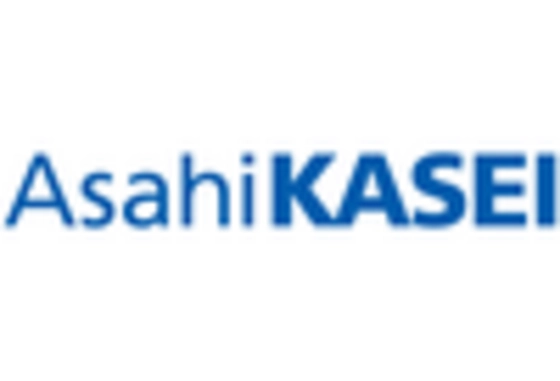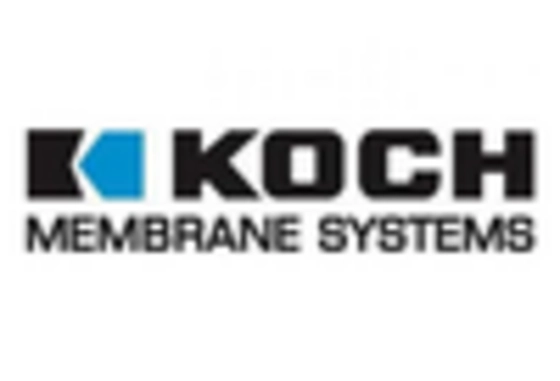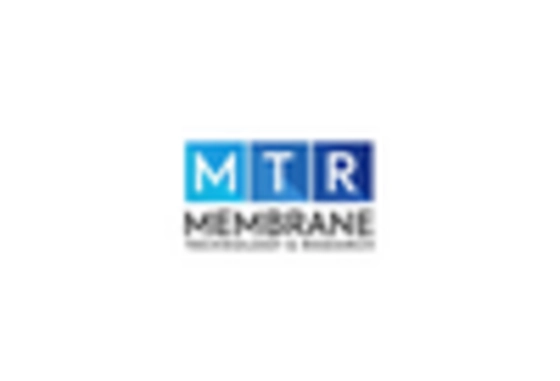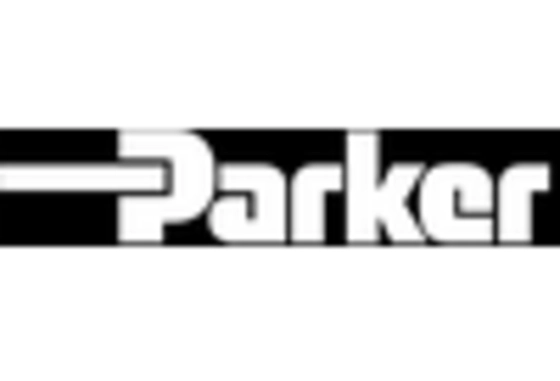Advancements in Medical Applications
The Polymer Nanomembrane Market is witnessing advancements in medical applications, particularly in drug delivery and tissue engineering. The unique properties of polymer nanomembranes allow for controlled release of therapeutics, which is crucial in enhancing treatment efficacy. The global market for drug delivery systems is projected to exceed USD 200 billion by 2025, indicating a significant opportunity for polymer nanomembranes in this sector. Furthermore, their biocompatibility makes them suitable for various medical devices, potentially revolutionizing patient care. As research continues to explore innovative applications, the Polymer Nanomembrane Market is likely to expand its footprint in the healthcare sector.
Rising Demand for Water Purification
The Polymer Nanomembrane Market is experiencing a notable surge in demand for advanced water purification technologies. As water scarcity becomes an increasingly pressing issue, the need for efficient filtration solutions is paramount. Polymer nanomembranes, with their superior permeability and selectivity, are well-positioned to address these challenges. The market for water treatment membranes is projected to reach approximately USD 5 billion by 2026, indicating a robust growth trajectory. This demand is driven by both industrial and municipal sectors seeking sustainable solutions to ensure clean water access. The Polymer Nanomembrane Market is thus likely to benefit from this trend, as innovations in membrane technology continue to enhance performance and reduce operational costs.
Growth in Energy Storage Applications
The Polymer Nanomembrane Market is poised for growth due to the increasing adoption of energy storage systems. As the world shifts towards renewable energy sources, the need for efficient energy storage solutions becomes critical. Polymer nanomembranes are utilized in various energy storage applications, including batteries and supercapacitors, where they enhance ion transport and improve overall efficiency. The energy storage market is expected to grow significantly, with estimates suggesting it could reach USD 200 billion by 2025. This growth presents a substantial opportunity for the Polymer Nanomembrane Market, as manufacturers seek to develop membranes that can withstand high energy densities while maintaining performance.
Increased Focus on Environmental Regulations
The Polymer Nanomembrane Market is influenced by the heightened focus on environmental regulations aimed at reducing pollution and waste. Governments worldwide are implementing stringent policies to promote sustainable practices, which drives the demand for advanced filtration technologies. Polymer nanomembranes offer an effective solution for various applications, including air and water purification, aligning with regulatory requirements. The market for environmental filtration systems is expected to grow, with estimates suggesting a value of USD 10 billion by 2027. This regulatory landscape presents a favorable environment for the Polymer Nanomembrane Market, as companies innovate to meet compliance standards while enhancing product performance.
Emerging Applications in Food and Beverage Industry
The Polymer Nanomembrane Market is expanding into the food and beverage sector, where there is a growing need for efficient filtration and separation processes. Polymer nanomembranes are increasingly utilized for applications such as juice clarification, beer filtration, and dairy processing, where they enhance product quality and shelf life. The food and beverage filtration market is projected to reach USD 4 billion by 2026, driven by consumer demand for high-quality products and safety standards. This trend indicates a promising avenue for the Polymer Nanomembrane Market, as manufacturers develop specialized membranes tailored to meet the unique requirements of this sector.

















Leave a Comment